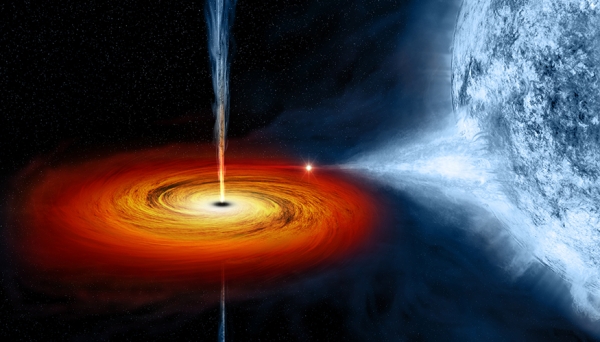High-power lasers now create record-high numbers of electron-positron pairs, opening exciting opportunities to study extreme astrophysical processes, such as black holes and gamma-ray bursts.
Positrons, or "anti-electrons," are anti-particles with the same mass as an electron but with opposite charge. The generation of energetic electron-positron pairs is common in extreme astrophysical environments associated with the rapid collapse of stars and formation of black holes. These pairs eventually radiate their energy, producing extremely bright bursts of gamma rays. Gamma-ray bursts (GRBs) are the brightest electromagnetic events known to occur in the universe and can last from ten milliseconds to several minutes. The mechanism of how these GRBs are produced is still a mystery.
That’s where high-power lasers come in. In the laboratory, jets of electron-positron pairs can be generated by shining intense laser light into a gold foil. The interaction produces high-energy radiation that traverses the material and creates electron-positron pairs as it interacts with the nuclei of the gold atoms along its path.
Read more at Lawrence Livermore National Laboratory
Image: An LLNL researcher and collaborator have reviewed how lasers can create energetic electron-positron pairs that are common in extreme astrophysical environments associated with the rapid collapse of stars and formation of black holes. Image courtesy of NASA/CXC/M.Weiss.


